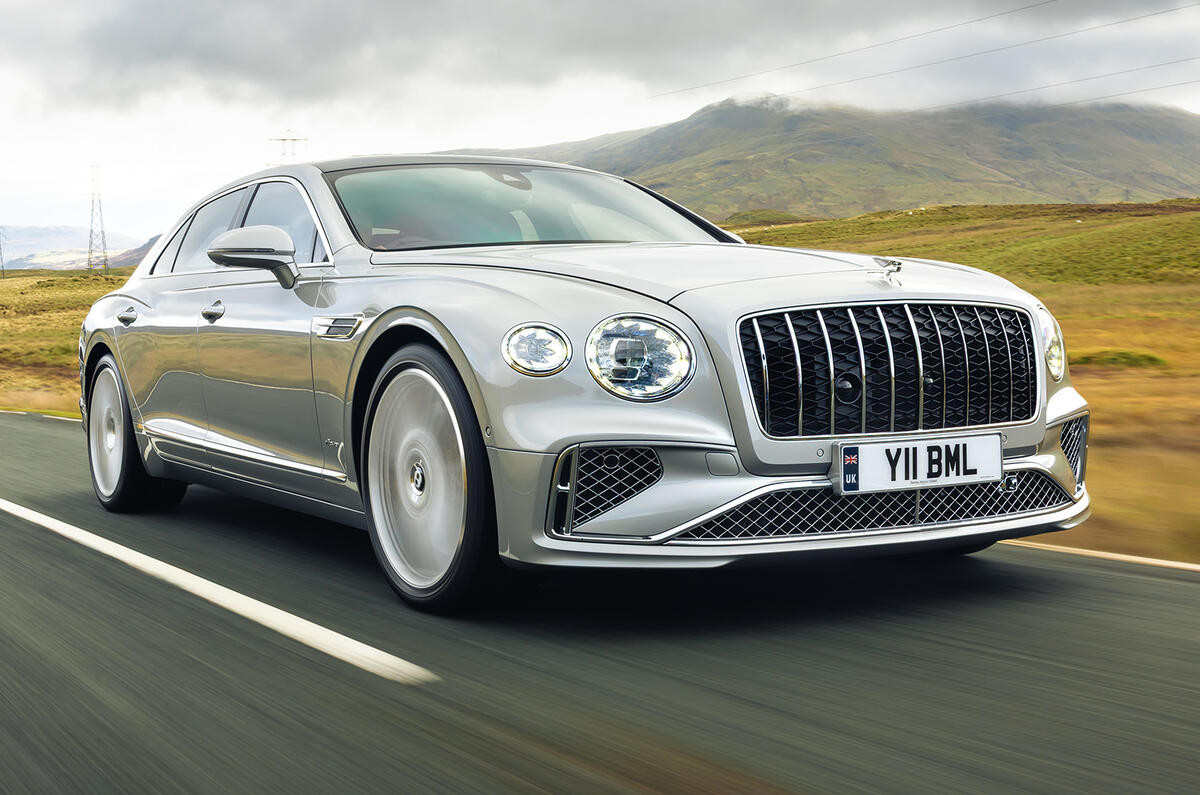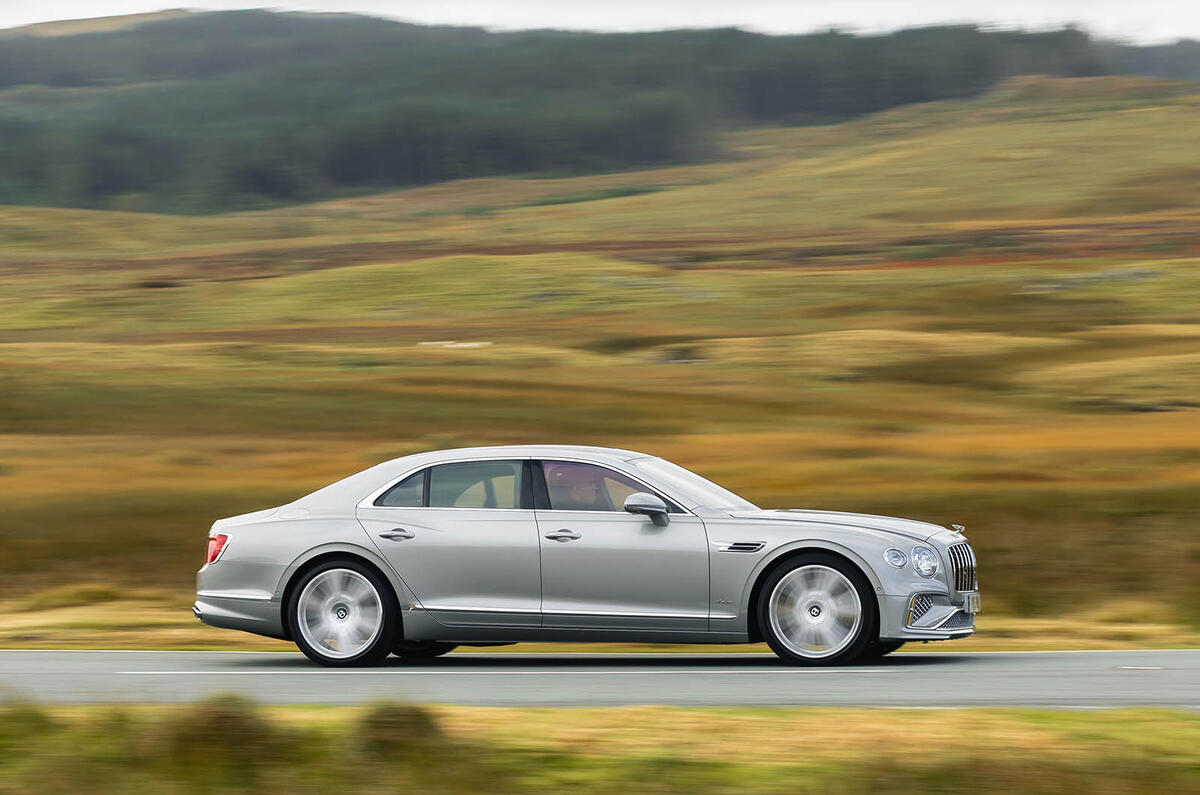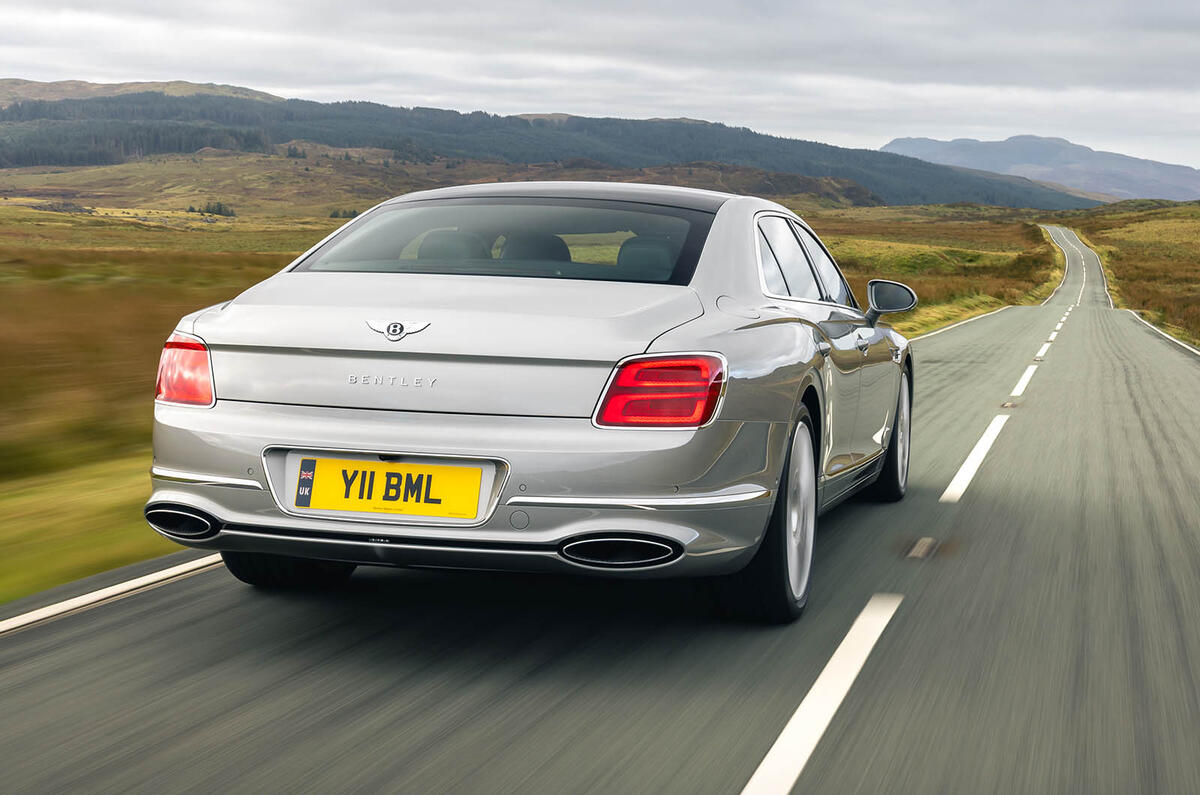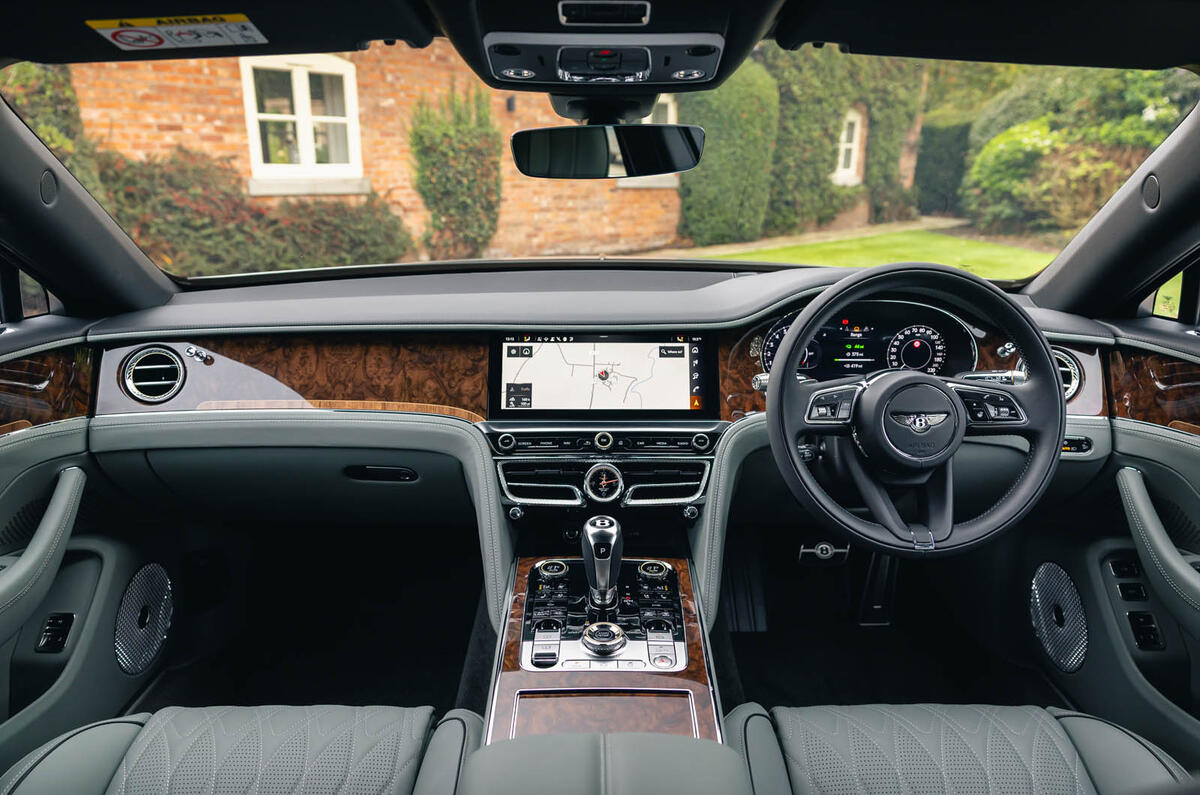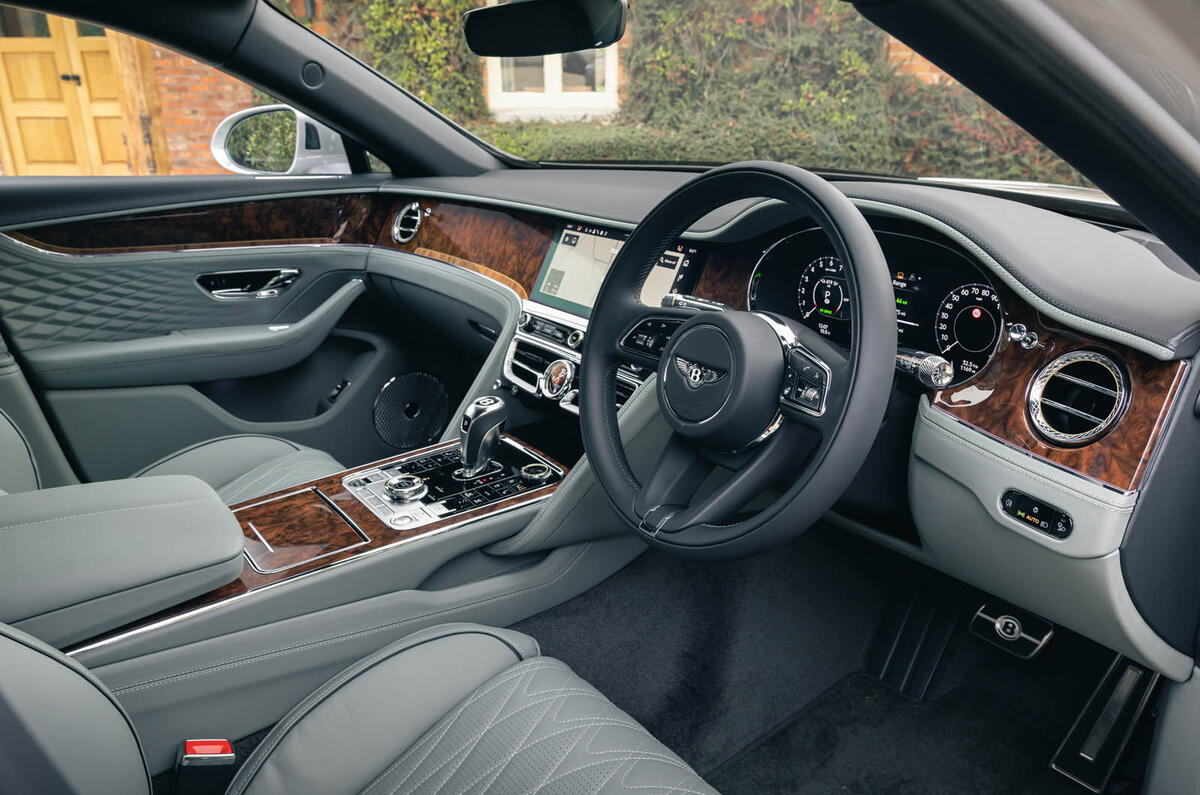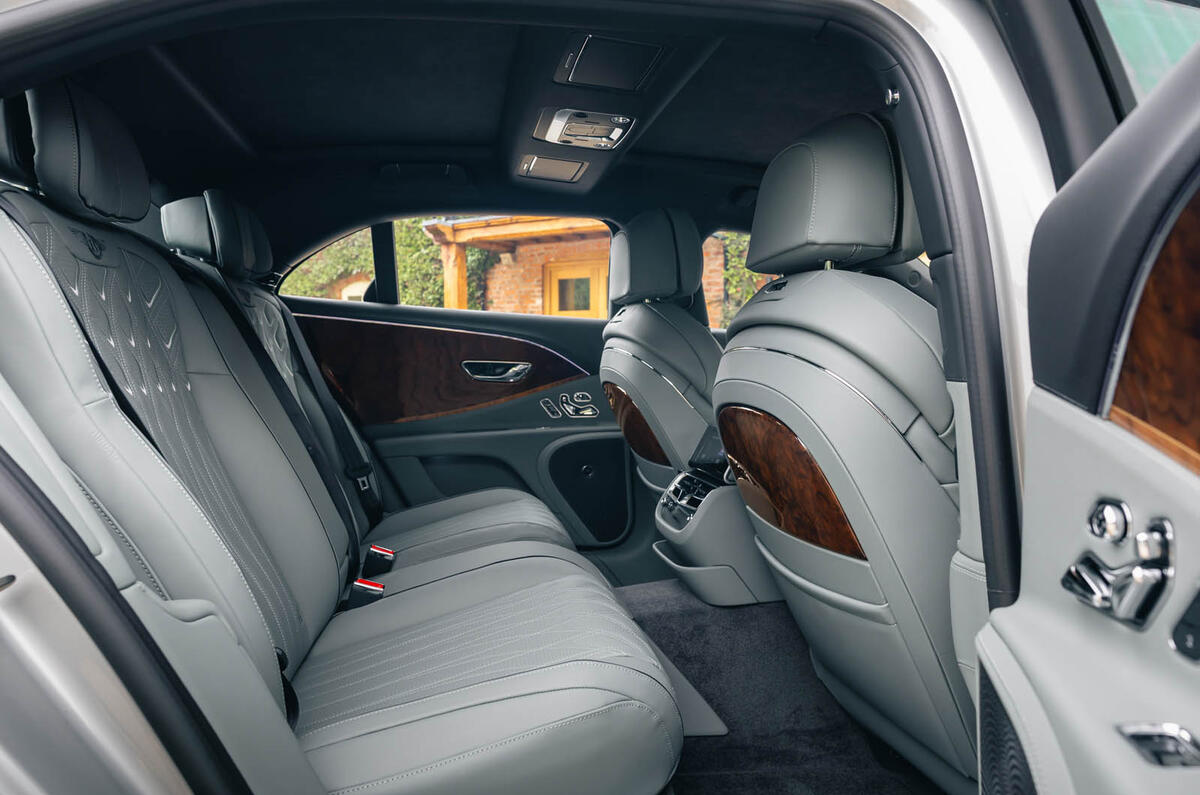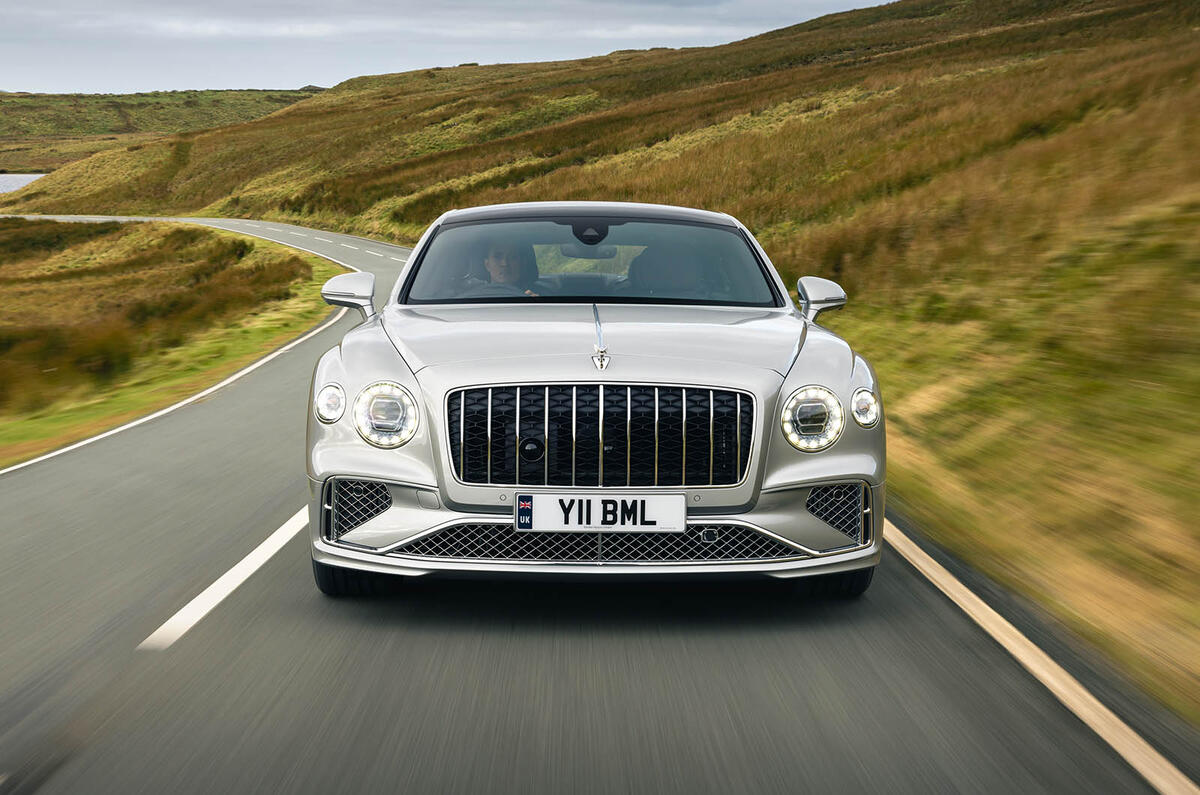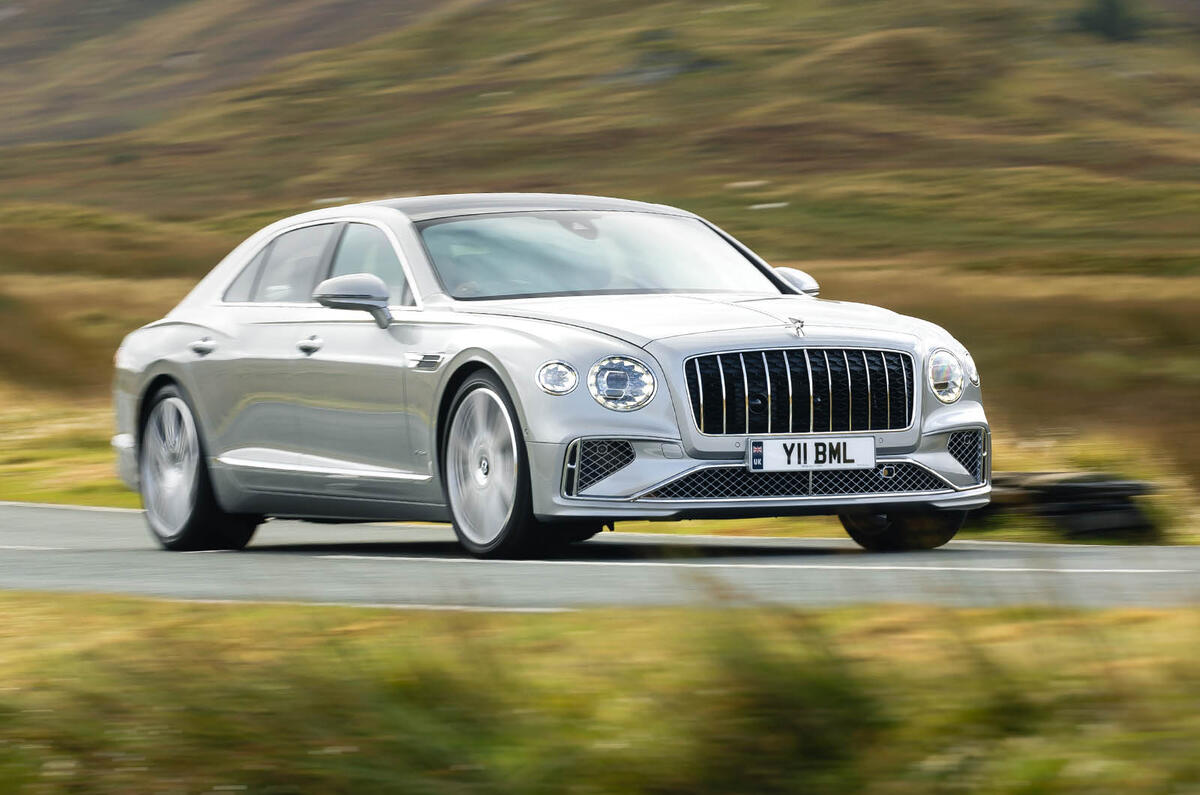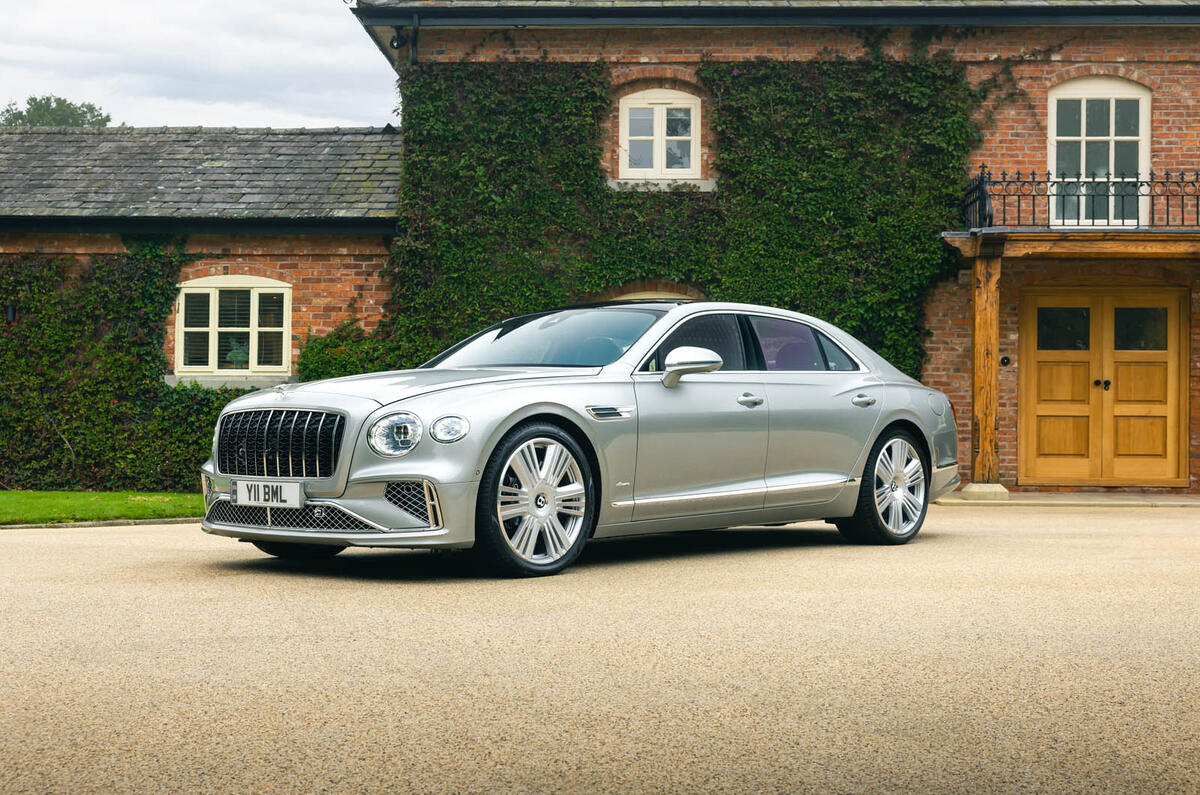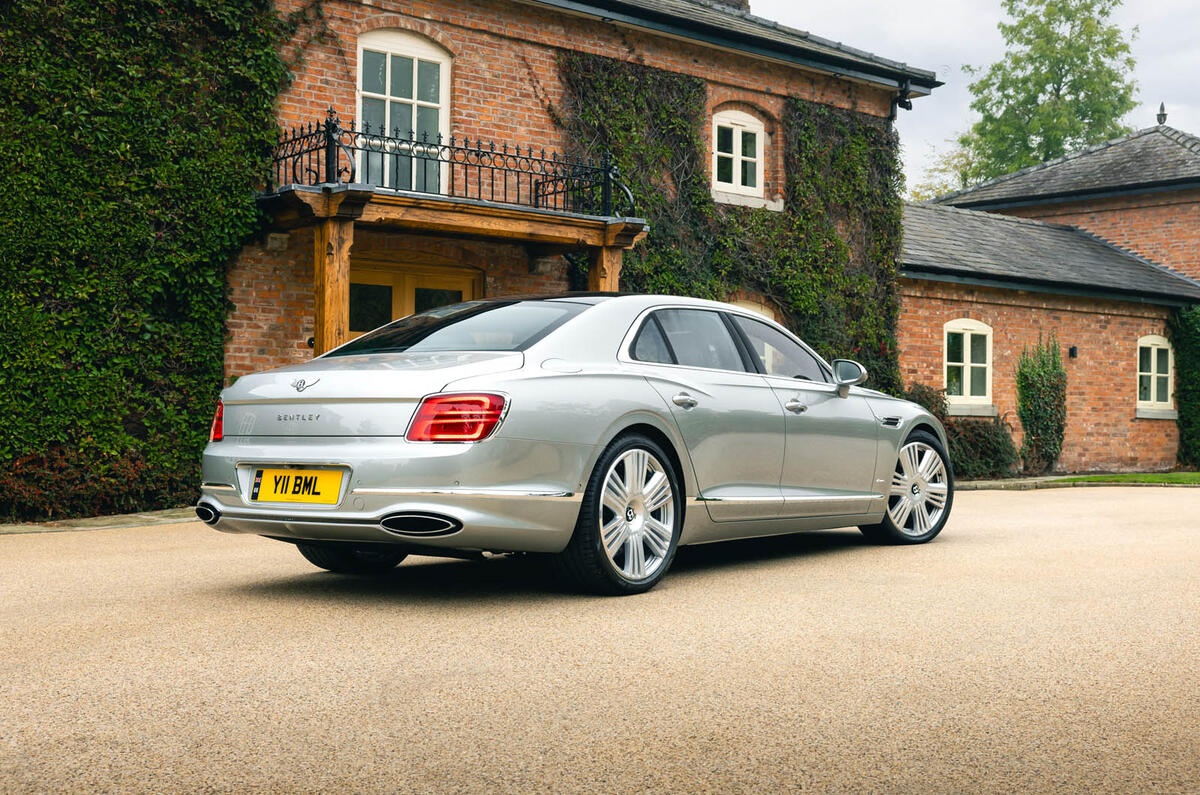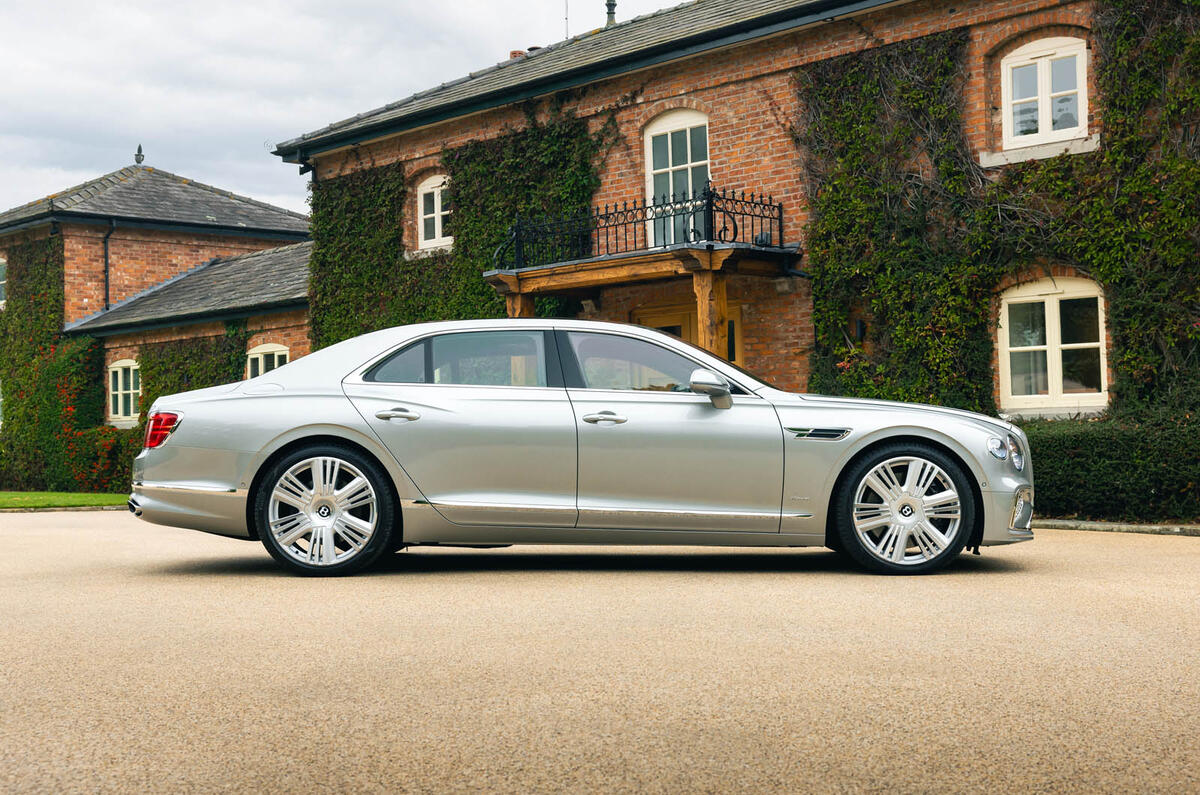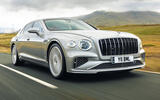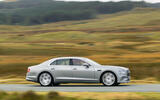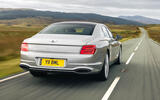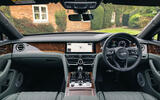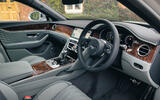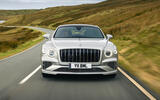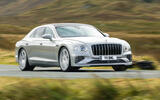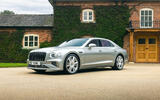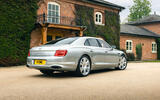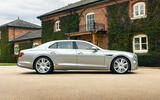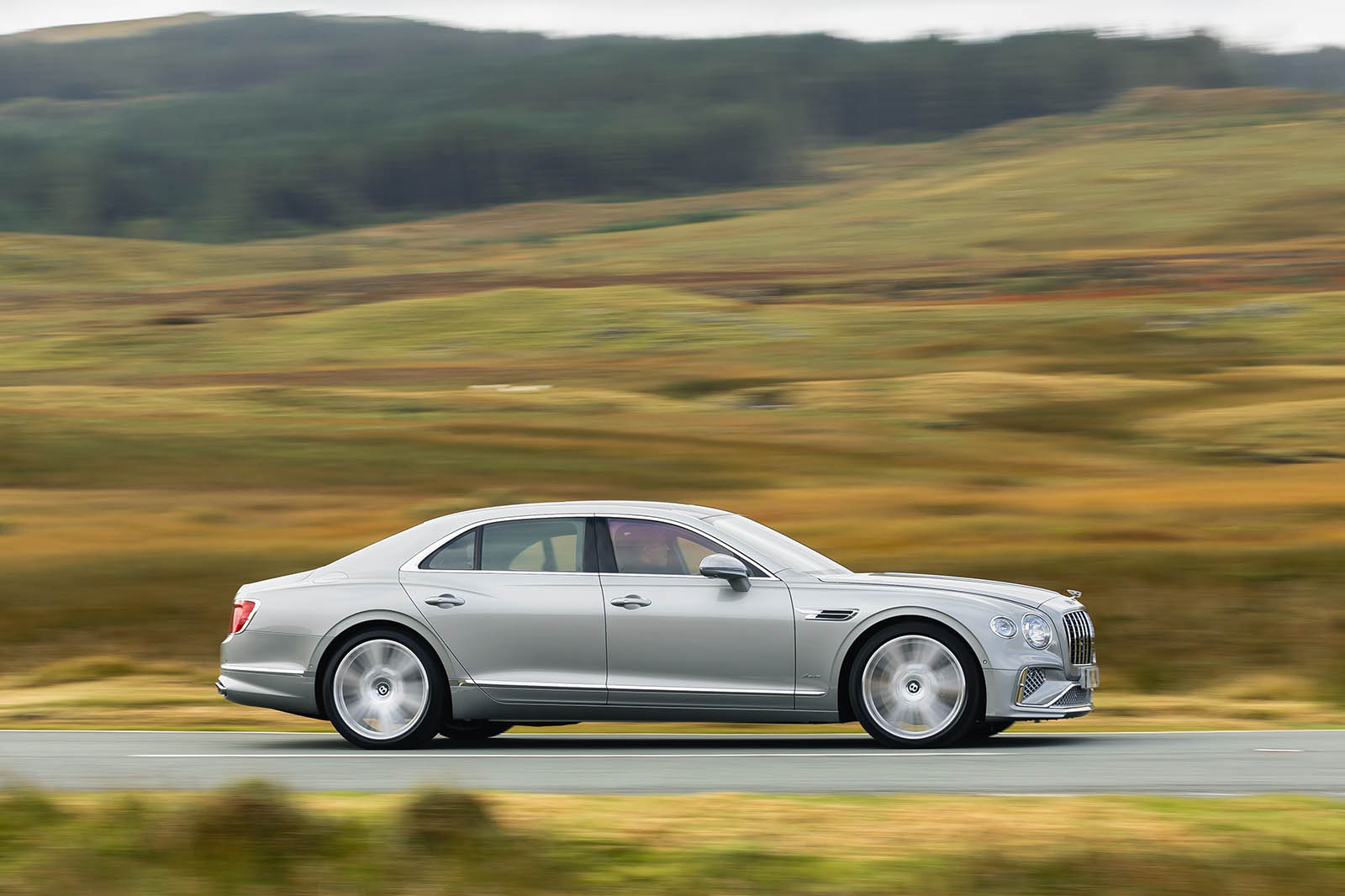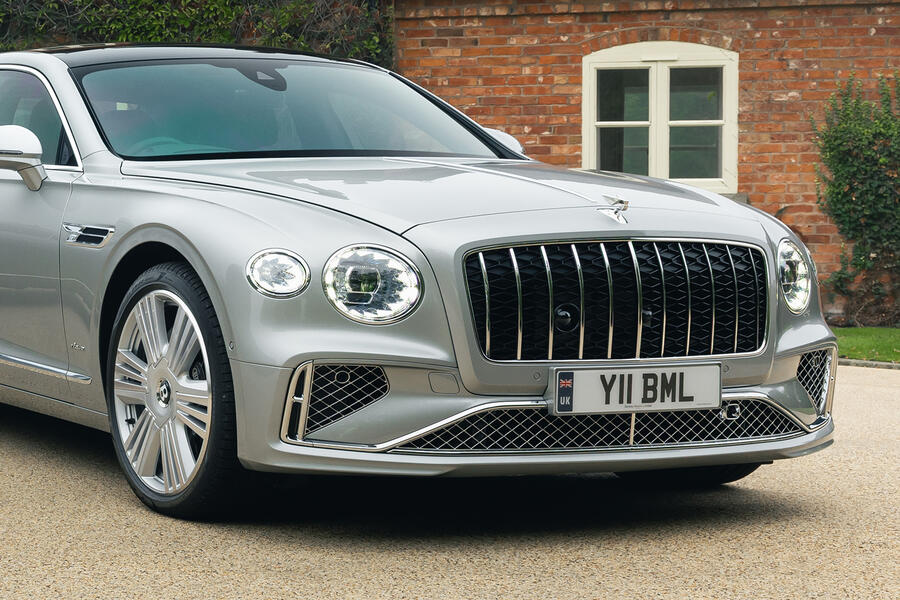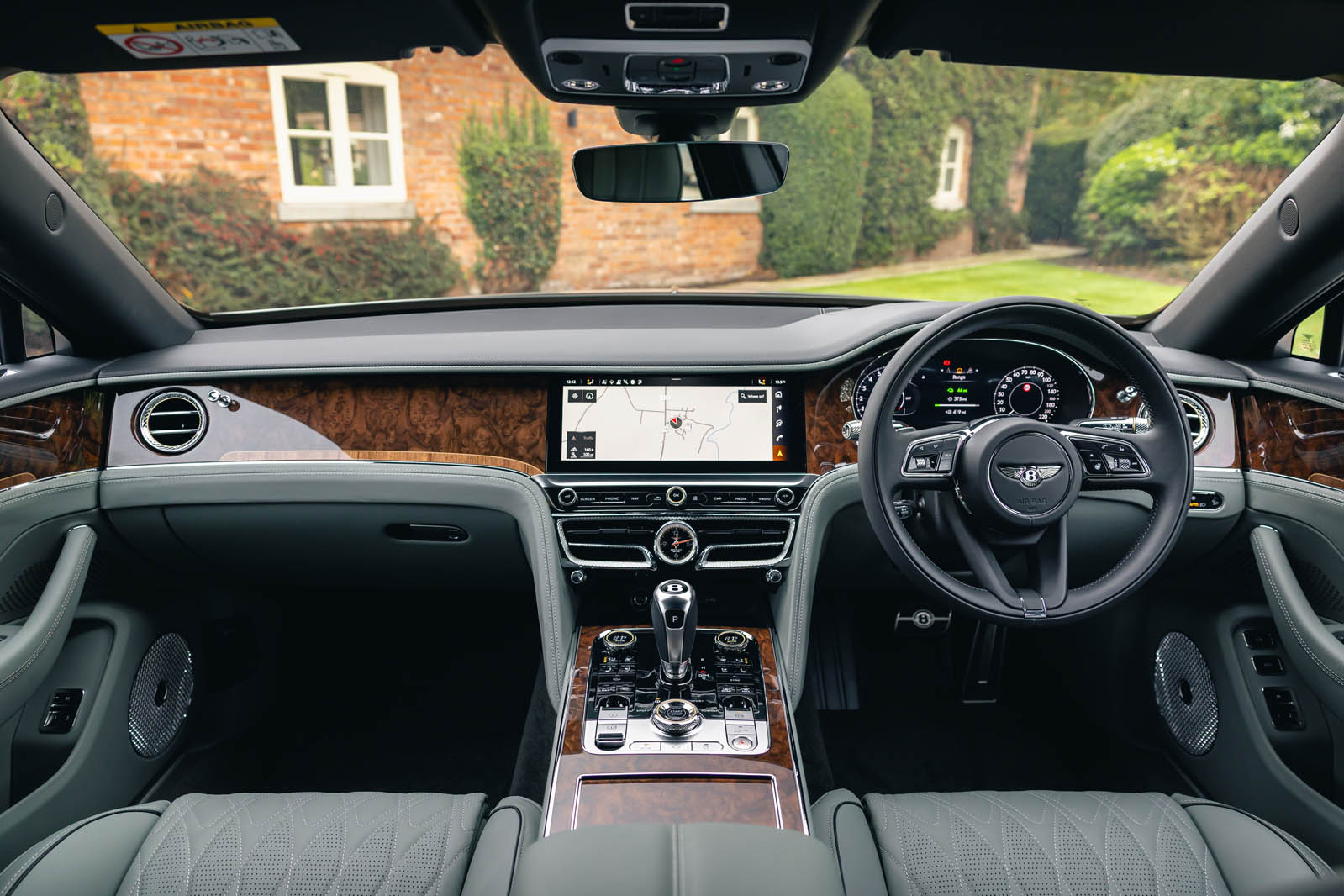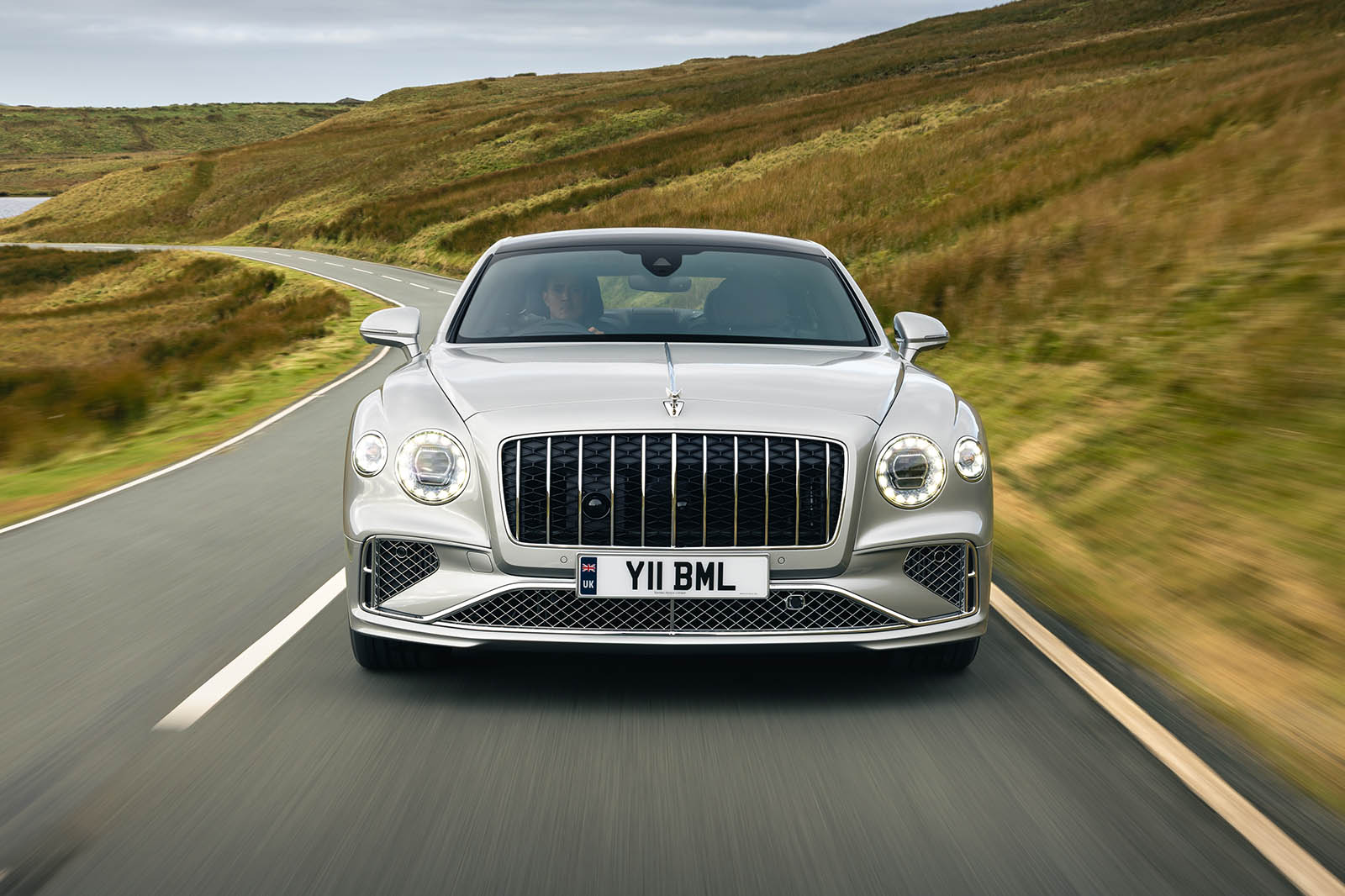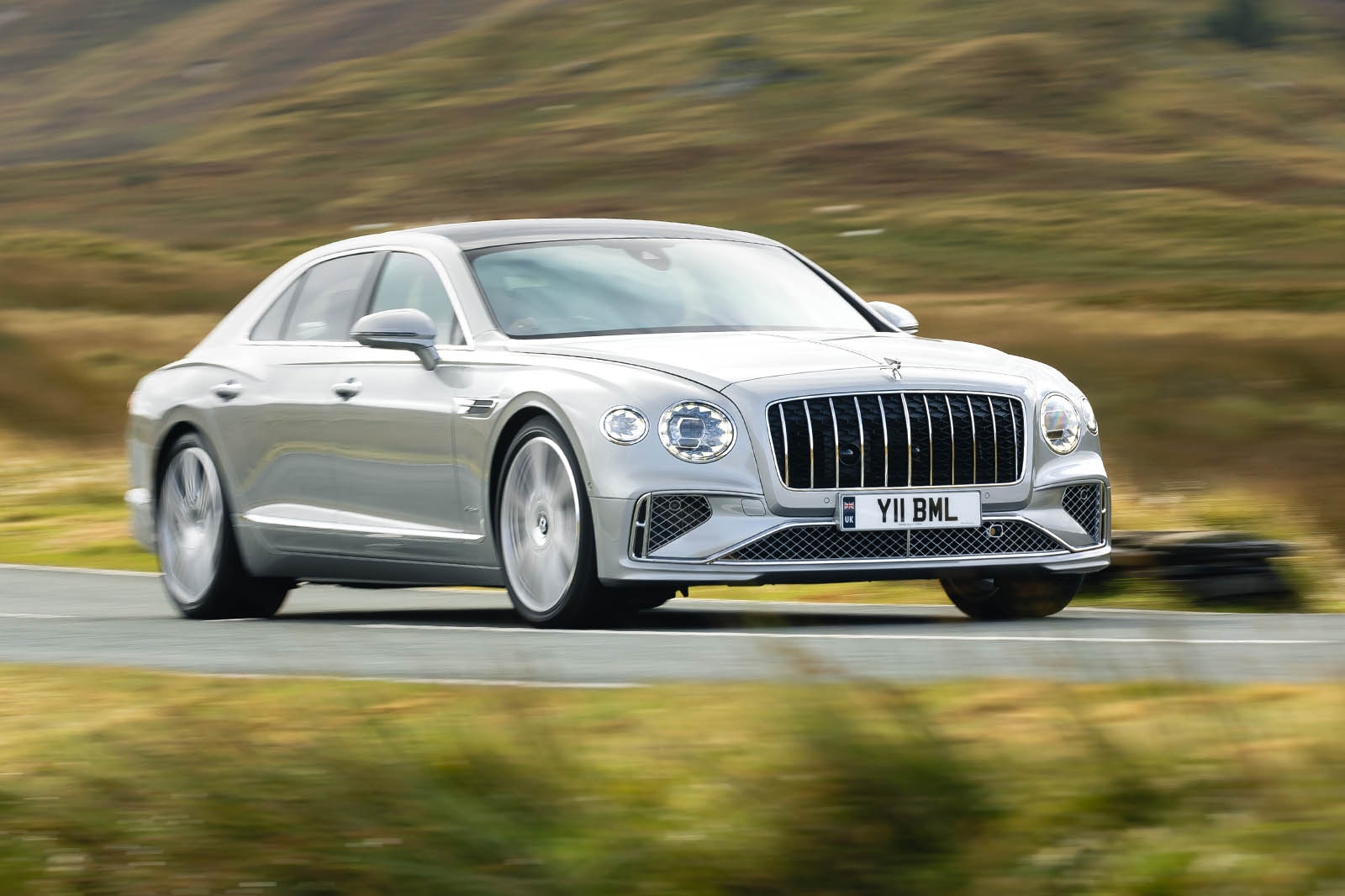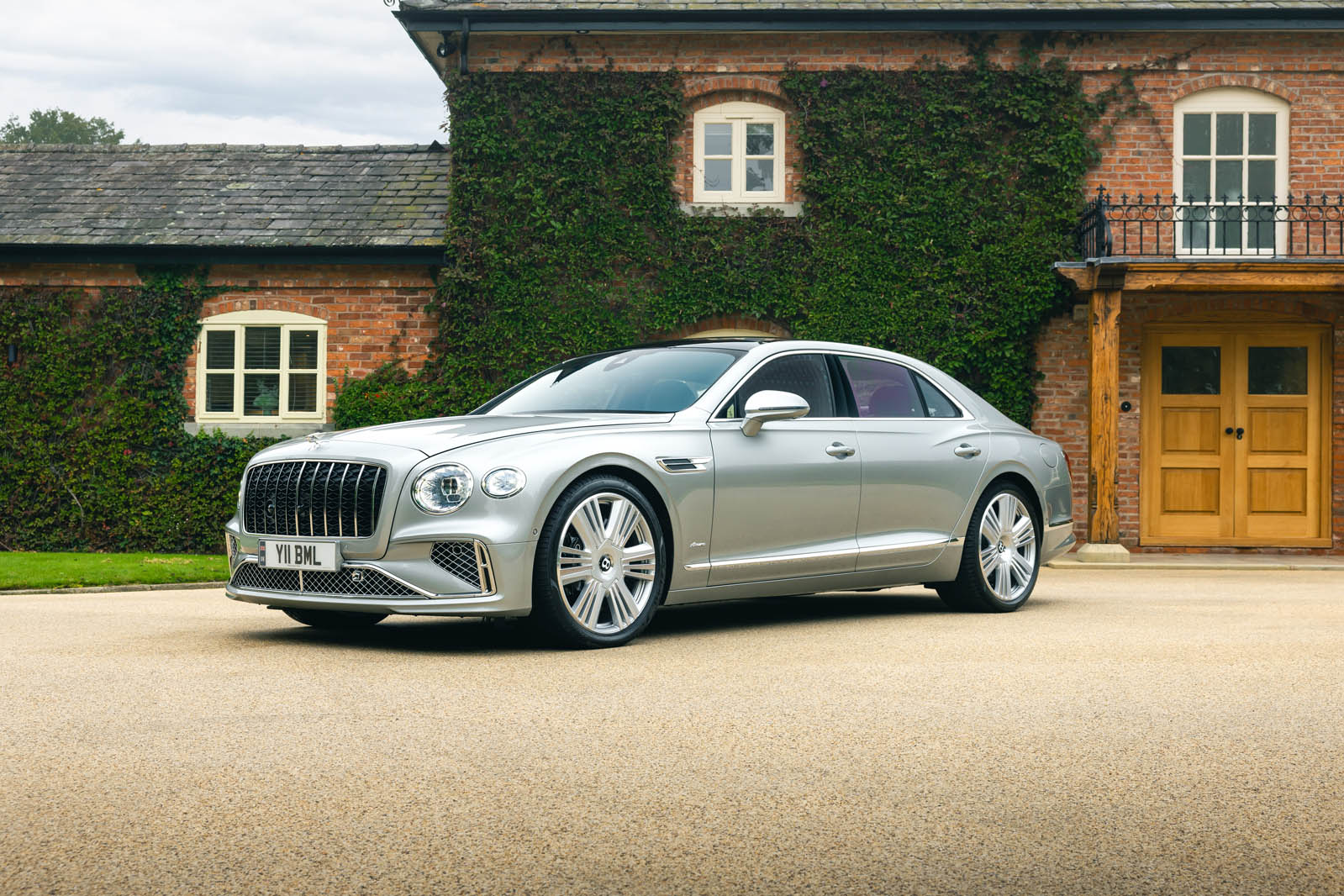If I told you there was a new Bentley Flying Spur with nearly 700 horsepower and sub-4.0sec 0-60mph potential, you probably wouldn’t expect it to be the soft-pedal, looking-after-the-pennies option.
That’s precisely the point. Crewe now has both ‘High Performance’ and ‘Ultra Performance’ versions of its latest V8 plug-in hybrid powertrains in showrooms; and you really wouldn’t feel short-changed in any way by the former.
The 'lesser one' powers all ‘core’ and Azure versions of the Flying Spur limousine, while the Ultra version powers Speed and Mulliner derivatives (this way for our full instrumented road test of the Flying Spur Speed). Go for a core model (that’s the one without any secondary Azure, Speed or Mulliner model billing) and you can - if you work really hard at it - buy a Flying Spur for less than £200,000. Well, you could; if you could convince a dealer to actually take your order without spending quite a lot more.



